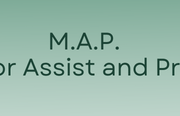Threatened journalists: out of 1706 attacks, 21% are on women
Questo articolo è disponibile anche in:
The data are calculated on the total of the intimidations ascertained by Ossigeno between 2015 and 2019 in Italy. In the first 3 months of this year the percentage is 24.
Female journalists threatened in Italy between 2015 and 2019 represent 21% of the 1706 reporters who suffered attacks and violations due to their work in that same period. The percentage of threatened female journalists is already at 24 per cent in the first three months of 2019. Out of a total of 73 threatened, 18 are women.
This is the unpublished data that Ossigeno per le Informazione presented on the 10th May 2019 at the conference “Much Mafia, Little News”, organized by the same association in collaboration with the Order of journalists of Lazio and with the support of UNESCO. At the event, which was held in the Queen’s Hall of the Italian Chamber of Deputies, more unpublished detailed data was presented on the threats to women journalists and who, for this reason, find themselves doubly targeted: as information professionals and as women.
The data analysis carried out by Ossigeno has shown that Lazio, in line with the national data of threatened journalists, remains the Region where also for women it is more risky to do this job. Considering the two years 2017-2018 as a reference period, female journalists who have suffered threats in Lazio total 34%. And in the first three months of 2019, the figure stands at 46%. In the ranking of regions with the greatest number of threatened female reporters, Lazio is followed by Puglia, Calabria and Campania; although in 2019 the latter gave way to Sicily.
In the same two-year reference period, the type of threat most used is a warning. On the other hand, 11% of the total consists of female journalists who received intimidation online between 2017 and 2018. Intimidations include threats of rape, sexist insults, vulgar epithets to define their appearance; but also insults and accusations of a lack of professionalism and competence. This seems to be the new frontier of threats against information professionals, whose problems are at the centre of attention of all international organizations dealing with freedom of the press and freedom of information.
To the problems of a profession in crisis, which has lost rights, protections and economic strength, these problems for female journalists are added to those that women experience generally in our society, still in some ways misogynist. The contractual weakness and the cultural stereotypes, not completely abolished. They induce female journalists to censor themselves and not to report threats or even harassment in the workplace.
RDM (wt)
Data processing: Dariò Barà







Leave a Reply
Want to join the discussion?Feel free to contribute!